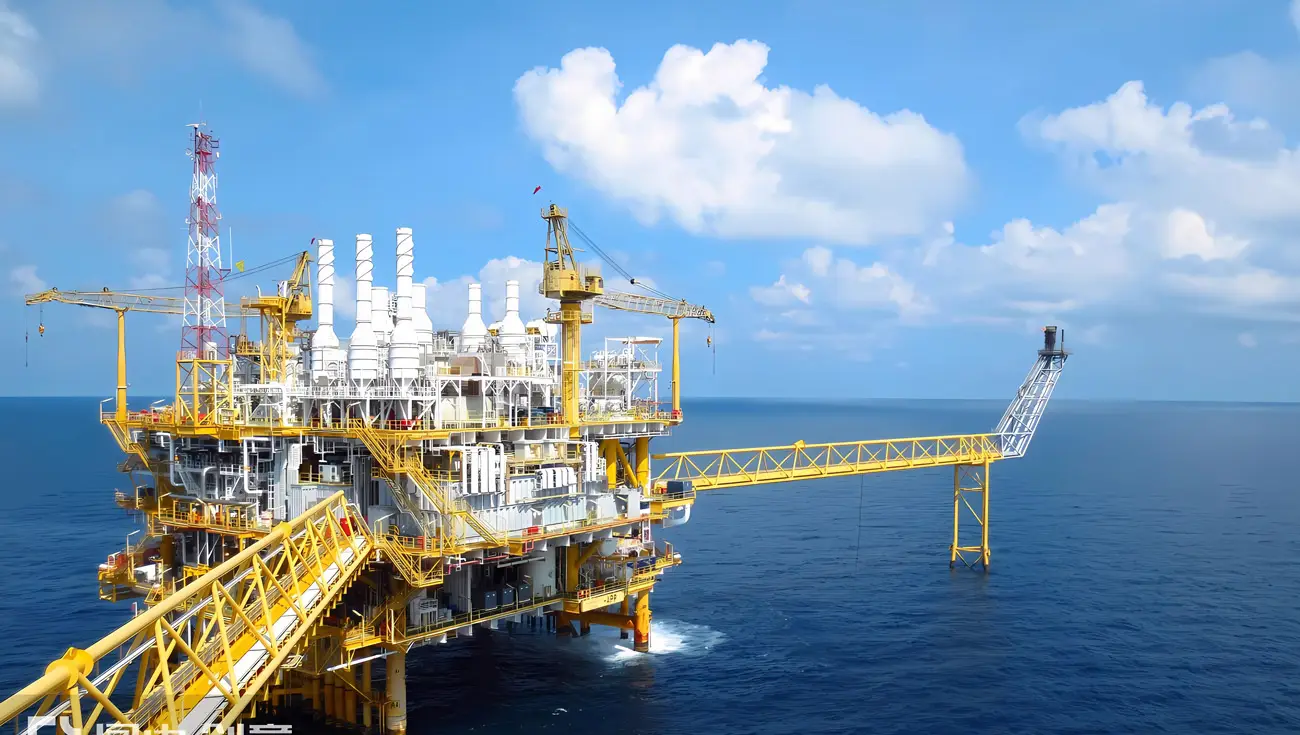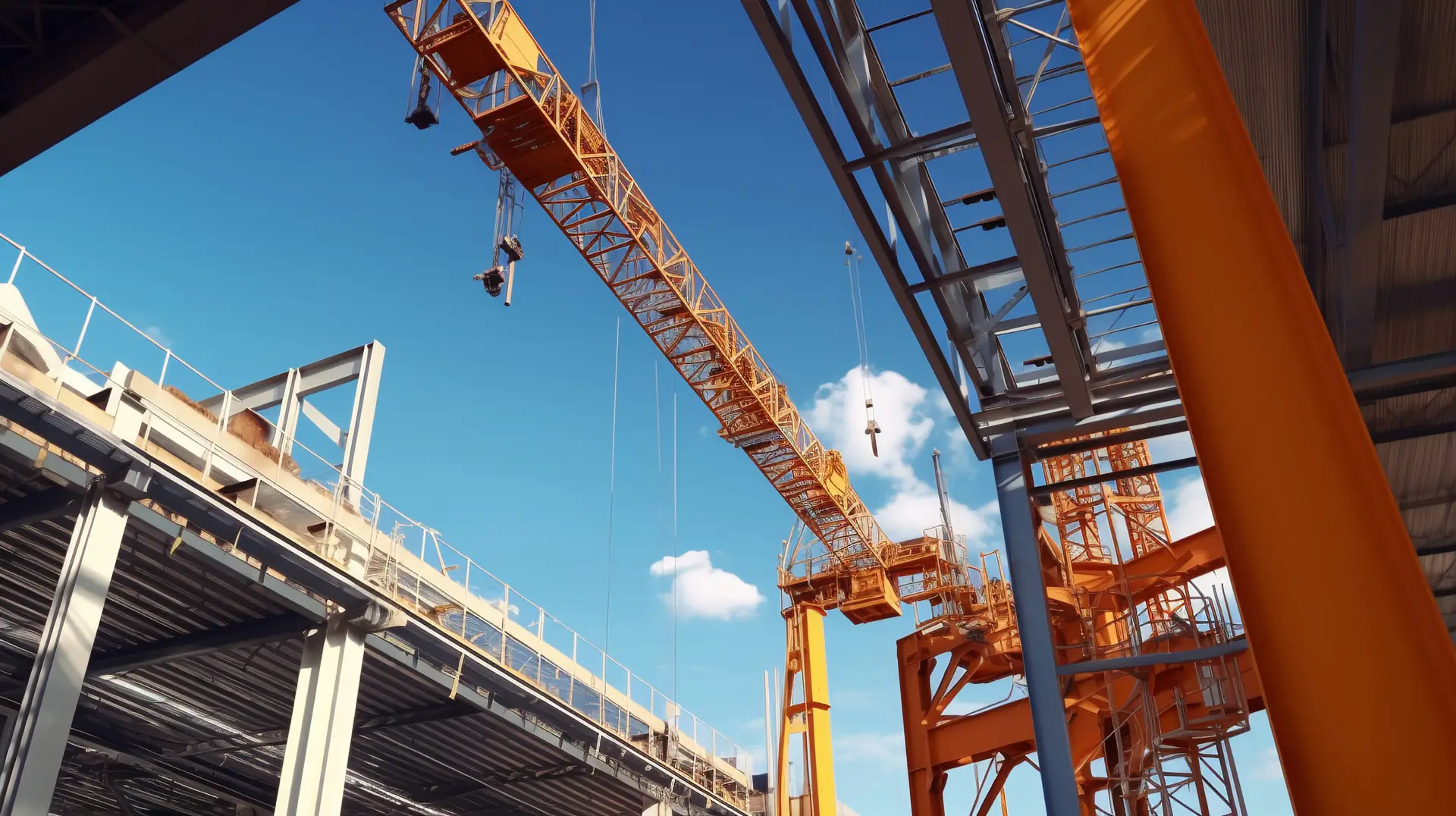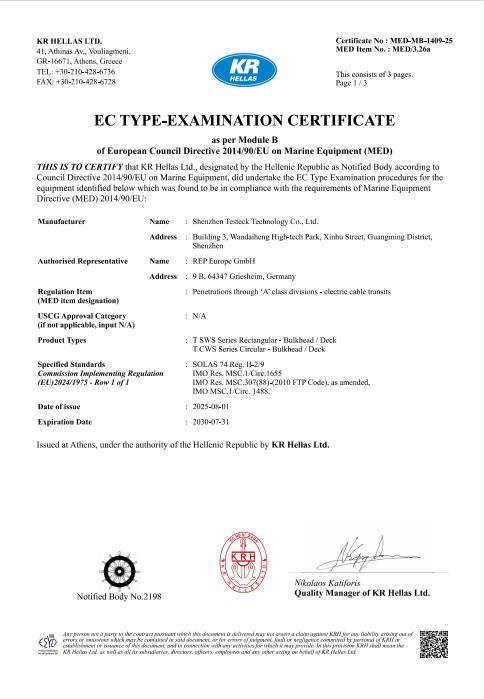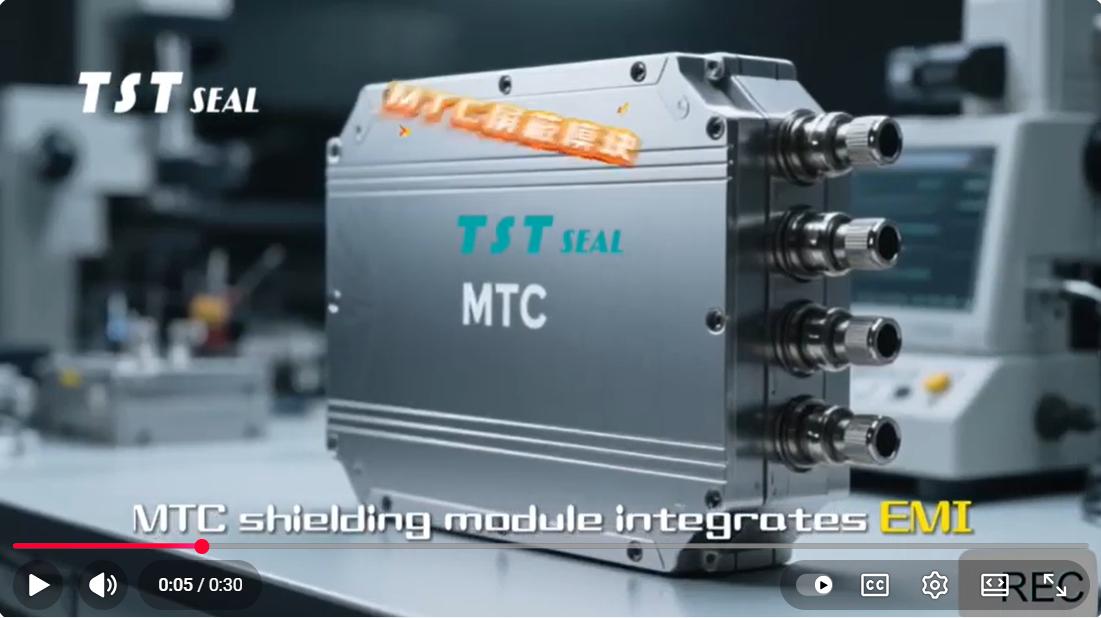
TST Seal :
- Fireproof
- Cable fixinAg
- Watertight
- Airtight
- Dustproof
- Noise reduction
- Vibration reduction
- Pressure resistance
- Corrosion resistance
- EMI/EMP
- Pest & rodent resistance
Related Articles
- circular seal (7)
- flange sealing (1)
- industrial sealing (2)
- MCT Transit Sealing System (2)
- rectangular seal (34)
- sealing modules (31)
- sealing solution (12)
Application of high-pressure pipeline flange sealing modules in ships and nuclear power
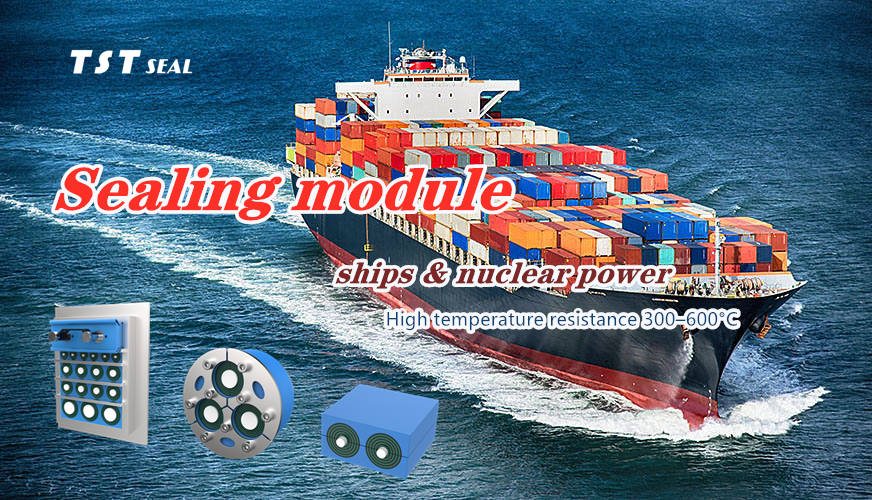
High-pressure pipeline flange sealing modules are key components used to achieve high-pressure, high-temperature or corrosive media sealing in industrial pipeline systems. They are usually composed of flange bodies, sealing gaskets and connecting bolts. Its core function is to ensure the sealing of pipeline connections, prevent medium leakage and ensure safe operation of the system through reasonable structural design and material selection.
High-pressure pipeline flange sealing modules are key connection components in industrial and ship systems. Their design and selection directly affect the sealing, safety and service life of the system. So, what are the characteristics and selection methods of high-pressure pipeline flange sealing modules? TST seal takes everyone to understand the application of high-pressure pipeline flange sealing modules in military industry, ships and nuclear power.
- Application scenarios of high-pressure pipeline flange sealing modules
Petroleum and petrochemical industry
Oil and gas extraction and transportation: used for high-pressure oil wells, natural gas pipelines, refinery reactors, etc., and the pressure range is usually 10–100 MPa (such as API 6A, ASME B16.36 standards). High temperature and high pressure environment: such as cracking units and hydroprocessing equipment, flanges need to withstand high temperatures of 300–600°C and highly corrosive media (such as hydrogen sulfide and chlorides).
Shipbuilding and marine engineering
Ship propulsion system: propeller shaft seals and steering gear hydraulic pipelines must meet SOLAS fire protection requirements (such as A-60 fire-resistant partitions).
Liquefied natural gas (LNG) carriers: low temperature (-162°C) high pressure pipelines need to use low temperature alloy steel flanges and flexible graphite gaskets (such as GB/T 9124 PN series).
Nuclear power and chemical industry
Nuclear reactor coolant system: TST SEAL uses all-metal sealing flanges (such as ASME B16.5 Class 900) with corrugated gaskets to ensure zero leakage.
Synthetic ammonia/urea production: high pressure (30–35 MPa) corrosive media (such as liquid ammonia) pipelines need to use stainless steel or duplex steel flanges (such as DIN 2527).
Aerospace and military industry
Rocket fuel delivery system: TST SEAL uses titanium alloy flanges and polytetrafluoroethylene (PTFE) gaskets to adapt to extreme temperatures (-200°C to +300°C) and vibration environments.
- Material and performance requirements
Flange materials
Carbon steel: Suitable for normal temperature and medium pressure environments (such as ASTM A105), low cost but limited corrosion resistance.
Stainless steel: 316L, 304L are used for corrosive media (such as seawater, acid and alkali liquids), with a temperature resistance of up to 800°C.
Alloy steel: 2.25Cr-1Mo (ASTM A182 F22) is used for high temperature and high pressure (such as 350°C, 25 MPa).
Special alloys: Inconel 625, Hastelloy C-276 are used for highly corrosive environments (such as wet hydrogen sulfide).
Sealing gasket materials
Metal gaskets:
Octagonal gaskets/elliptical gaskets: suitable for trapezoidal groove flanges (such as ASME B16.5), pressure resistance 30–100 MPa, and secondary tightening is required.
Corrugated metal gaskets: compensate for surface unevenness, suitable for dynamic sealing (such as pump inlet and outlet).
Non-metal gaskets:
Flexible graphite wound gaskets: temperature resistance -200°C to 600°C, pressure resistance 30 MPa, suitable for high-temperature steam pipes.
PTFE gaskets: resistant to low temperature (-200°C) and chemical corrosion, but low compression rebound rate, requiring a metal skeleton.
Composite gaskets:
Metal-coated gaskets: outer layer of stainless steel/inner layer of graphite, balancing strength and sealing (such as ASME B16.20).
III. Sealing methods and technologies
Traditional flange seals
Rigid seals: plastic deformation of the gasket (such as rubber gaskets) through bolt preload, suitable for low pressure (<10 MPa) normal temperature environment.
Metal-to-metal seal: hard seal (such as self-tightening flange), relying on the elastic deformation of the sealing lip, suitable for high pressure (>25 MPa) and high temperature conditions.
Self-tightening flange (high-pressure self-tightening flange)
Structural features: composed of a sleeve, a ferrule, and a sealing ring, the sealing ring automatically tightens when under pressure.
Advantages: tensile strength exceeds the pipe base material, and has excellent bending and impact resistance (such as no leakage in the DN15 specification cold bending test).
Application scenarios: deep-sea drilling platforms, aerospace fuel delivery systems.
New sealing technology
Self-healing materials: microcapsule elastomers, releasing repair agents at microcracks.
Intelligent monitoring: integrated optical fiber sensors monitor leaks in real time (such as TST seal temperature sensor technology).
- Installation and maintenance points
Installation specifications
Flange surface cleanliness: remove rust and burrs, and ensure that the surface roughness Ra ≤3.2 μm.
Bolt preload control: use a torque wrench or hydraulic tensioning tool to tighten in steps according to the standard torque value (such as ASME B31.3). Gasket selection: Select the gasket type according to the medium, temperature and pressure (such as PTFE is preferred for low temperature environment).
Maintenance and inspection
Regular inspection: Check the flange cracks by ultrasonic testing (UT) or magnetic particle testing (MT) (such as API 570).
Leak test:
Air tightness test: Helium mass spectrometer leak detector detects micro leaks (sensitivity 10⁻⁹ Pa·m³/s).
Water pressure test: 1.5 times the design pressure for 30 minutes (such as ASME BPVC).
Replacement cycle: Make a plan according to the working conditions (such as replacing gaskets every 3 years for high-temperature steam pipelines).
- Latest technological progress
Standardization and certification
International standards:
ISO 17712: Design specification for container mechanical seals.
ASME B16.5/16.47: Flange size, pressure-temperature rating.
Environmental regulations:
IMO 2020 sulfur emission restrictions: Promote the application of halogen-free flame retardant gaskets (such as graphite-based materials).
EU REACH Regulation: Prohibit the use of asbestos gaskets and promote flexible graphite substitutes.
Digitalization and intelligence
Digital twin: Predict flange life through ANSYS simulation (such as creep-fatigue interaction model).
Intelligent assisted selection: Automatically recommend flange types and gaskets based on operating parameters (such as TST SEAL sealing module platform).
- TST SEAL Typical application cases
Scene | Flange type | Materials/gaskets | Standards |
LNG tank outlet pipeline | Neck welding flange (WN) | 304L stainless steel + flexible graphite spiral wound gasket | ASME B16.36, ISO 15614 |
Nuclear power plant main pump flange | All-metal sealing flange | 2.25Cr-1Mo + corrugated metal gasket | ASME B16.5 Class 900 |
Deep-sea drilling platform hydraulic pipeline | Self-tightening flange | Inconel 625 + octagonal gasket | API 6A, ISO 10423 |
The application of TST SEAL high-pressure pipeline flange sealing module requires comprehensive consideration of material properties, sealing methods, installation specifications and the latest technology. With the development of material science and intelligent technology, self-tightening flanges, self-healing materials and intelligent monitoring systems are improving the reliability and safety of the system. It is recommended to select solutions that meet international standards (such as ASME, ISO) according to specific working conditions and perform regular maintenance to extend the service life. If you need a high-pressure pipeline flange sealing module, please email the TST SEAL cable sealing module engineer and get a free sample.

